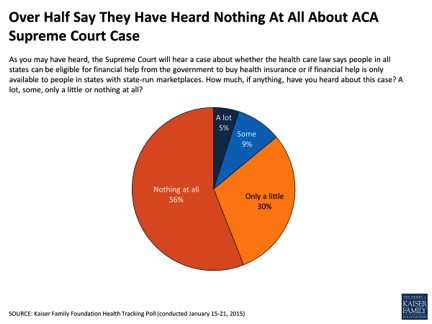Medical Care Must Not Be Converted To A Commodity
Stanley Feld M.D.,FACP,MACE
This blog post is a follow up to my last blog "Restricting Access To Care." I published this blog on May 10 2010. The Obama administration has ignored every word. As consumers and physicians might have notice the quality of medical care and the patient/physician relationships have deteriorated as I predicted because Obamacare.
Medical care is not patient centric. Healthcare reform (Obamacare) has been focused on process and not patients. This focus has distorted the effectiveness of medical care even more that it was pre Obamacare.
President Obama has increased the complexity of healthcare in an attempt to make medical care a commodity. His scheme is failing at the expense of consumers.
President Obama keeps on telling the same lie. “Obamacare is a success.” Consumers are not that stupid.
The public must start understanding what is happening now and not complain about why medical care has been destroyed later.
Once the public understands what is happening, individuals must write their congressperson and protest.
Consumers must not believe every lie thrown at them by the traditional media especially when the lie is counter to their every day experience.
I am republishing a previous blog that explains the attempt of turning medical care into a commodity.
Medical Care Must Not Be Converted To A Commodity
Stanley Feld M.D.,FACP,MACE
" President Obama is creating a new bureaucratic agency. It is called the Independent Payment Advisory Board. The Independent Payment Advisory Board will not be measuring clinical judgment or patient compliance when judging the effectiveness of treatment. Its measurement will be physician compliance with evidence based medicine. President Obama, please reexamine your premises.
I am in favor of clinical practice guidelines and evidence based medicine. However, both should be used as an educational tool for physicians and not as a punitive tool to judge payment.
The USPHTF will determine the evidence based medicine to be used. I have pointed out the deficiencies in the USPHTF in the past.
This bureaucracy is an attempt by the government to commoditize medical care. Once medical care is commoditized the cost for medical care is suppose to decrease.
Intensive control of the blood sugar for Type 2 Diabetes Mellitus can be expensive in the short run. If intensive control decreases the complications of Type 2 Diabetes Mellitus it can decrease costs in the long term.
“It was not hypoglycemia from intensive control or intensive control itself that caused the increased deaths in the ACCORD study.”
Unfortunately, this information was not being reported on every TV station as the original study results were. The original study results set back universal use of intensive control of Type 2 Diabetes at least a decade.
“ It was important to say that in the intensive group it really was not the people with lower A1c who had problems, it actually was those who had the higher A1c who, despite intense efforts, we couldn't get under control."
This means patients did not comply with their responsibility to intensively control their chronic disease or their physicians did not teach them to control their blood sugar adequately.
"This reexamination gives a stronger momentum to the idea that we need to be thinking that one size doesn't fit all, we need to have different targets for different groups of people and perhaps different treatment strategies to reach those different targets as well. That's troubling both clinically and to the trialist.”
"This is something of a new idea, because previously there has been a strong impetus to having standardized guidelines for doctors and people with diabetes, but it's probably not the right thing to do.”
The reader can sense the discomfort of the academic physicians. They are realizing they cannot commoditize medical treatment. Ask any experienced practicing physician about their patients. Patients have different attitudes about their disease and treatment.
Each patient has to be related to differently. This is clinical judgment. Physicians communicating with their patients is called the physician patient relationships. Patients should be responsible for their outcomes along with physicians. This is the art of medicine. Neither patient nor physician can be treated as a commodity.
President Obama, I hope you are listening. Medical care is difficult to commoditize.
The ACCORD study originally suggested that the goal to normalize the HbA1c resulted in an increase in cardiovascular deaths. It turned out not to be true.
On the other hand an observational study was just published concluding that the lower the HbA1c the lower the complication risk.
“The Atherosclerosis Risk in Communities (ARIC) study is a community-based assessment of 11,092 middle-aged adults in four US communities with normal HbA1c were followed for up to 15 years (4 visits at about 3-year intervals) for onset of new diabetes, new CVD, stroke, and all-cause mortality.”
The higher the HbA1c the higher the average blood sugar and the greater the risk for chronic complications of Type 2 Diabetes Mellitus. HbA1c is a measure of the average blood sugar over the previous three months.
Table. HbA1c Levels and Corresponding Multivariate Hazard Ratios
|
HbA1c Level |
Multivariate-Adjusted Hazard Ratio |
|
< 5% |
0.52 (0.40-0.69) |
|
5% to < 5.5% |
1.00 (reference) |
|
5.5% to < 6% |
1.86 (1.67-2.08) |
|
6% to < 6.5% |
4.48 (3.92-5.13) |
|
≥ 6.5% |
16.47 (14.22-19.08) |
HbA1c = hemoglobin A1c
“The hazard ratios for stroke were similar, but for all-cause mortality, HbA1c displayed a J-shaped association curve. All associations remained significant after adjustment for the baseline FPG.”
The study found HbA1c values predicted Cardiovascular Disease (CVD) or death, whereas fasting plasma glucose (FPG) levels were not significant after adjustment for other risk factors.
“The recent ADVANCE [Action in Diabetes and Vascular Disease: Preterax and Diamicron MR Controlled Evaluation], ACCORD [Action to Control Cardiovascular Risk in Diabetes], and VADT [Veterans Affairs Diabetes Trial] trials left us wondering about the value of tight glycemic control in reducing CVD risk.”
“One of the many shortcoming of each of these trials was that most participants had had diabetes for many years, and the designs could not account for the long-term accumulation of glycemic burden.”
The authors claim that the vascular damage from high HbA1c may have already occurred. Tight control during the trials might have had relatively little effect. This is probably not true.
There is evidence that normalizing the blood glucose can lead to regression of the vascular lesions that cause the complications of Diabetes.
The current ARIC analysis demonstrates that higher HbA1c levels, even in the normal range, increase CVD risk.
These results are not conclusive because it is an observational study as opposed to a double blind placebo controlled study. The USPHTF and President Obama’s Independent Payment Advisory Board would not give this study as much credit as the ACCORD study.
The ACCORD study was a placebo controlled double blind study. Its conclusions have more power than an observational study (ARIC). The problem is ACCORD measured the wrong endpoint. ACCORD has resulted in a great disservice to the standard of medical care of diabetes.
The results of The Atherosclerosis Risk in Communities (ARIC) study suggest that maintaining a HbA1c as near normal as possible even before the onset of diabetes may help prevent CVD.
As President Obama tries to quantify the standard of care he could be picking the wrong standard of care in order to reduce the cost of medical care. All medicine is local. Standards of care are always evolving. The standard of medical care should be determined by local medical leaders who are respected as teachers by local practitioners. It can also be enforced by local peer review with no monetary interest in the outcome.
President Obama’s effort to improve medical care at a reduced price will not succeed if it is interpreted as a punitive measure by a national bureaucracy.
The opinions expressed in the blog “Repairing The Healthcare System” are, mine and mine alone.
May 30, 2010 "
A healthcare system that would work and be cost effective must be a consumer driven healthcare system. It must be patient centered and not stakeholder centered.
It must put consumers in a position of responsibility for their health and healthcare dollars and not in a position of dependence on the government.
The opinions expressed in the blog “Repairing The Healthcare System” are, mine and mine alone
Please have a friend subscribe

